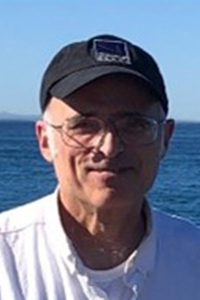Peter Personal
Six generations of Meyers

Karl Meyer
1809-1893

Traugot Meyer
1862-1959

Hubert Meyer
1898-1988

Peter C. Meyer
1928- now

Paul W. Meyer
1958-now

John J. and Anton Meyer
1963 and 2000 to now
|
LIFE OF PETER C. MEYER IN CHRONOLOGICAL ORDER
|
1928: Born in Berlin, Germany
1938:
Entered high school in Berlin Germany
1943: Transferred to High School in Blankenburg/Harz to scape bombs
1945: Age 16,
defended Blankenburg against invading American troops.
1947:
Graduated High School in Blankenburg Harz, Germany
1947: I attended East German Actors College, Quedlinburg, Germany.
1947: I crossed the Iron Curtain from East to West Germany.
1947: An attempt to stow away to reach the US illegally failed.
1947-1948: Pig farm worker, Bremen Germany
1948-1951: Bartender British Officers Clubs, occupation forces in Germany
1951-1952: Supervisor Officers Mess, Prince of Wales Dragoon Guards
1952: Sailed for the USA legally
1952-1953: Laboratory Assistant,
National Aluminate Corp. Chicago Ill.
1953: Drafted into the US
Army, during the Korean Conflict
1953: Basic training, Camp Chaffee, Arkansas, fire direction control, artillery
1954-1955: Member 517th, AFA Battalion, Frankfurt/Buedingen, Germany
1955: I lived in Paris, France, and worked as a tourist guide.
1956: Accepted at Brigham Young University Provo, Utah, as a Non-Mormon
1957-1959: UC Berkeley, graduated with honors in international economics.
1958: On January 8, arrived Paul, my firstborn.
1959-1960: Bank of
America International, Executive Training Program
1961-1962: Law
School, San Francisco, California
1962-1964: Proc. Supply Officer,
State Compensation Insurance Fund, San Francisco
1965-1974: County
Elections Officer, Assistant Registrar, Marin County CA
1971-1972:
Published:
Election Notebook a monthly publication, for California election Officials
1971: Published:
Why Bother? a pamphlet for young voters, 2nd Edition in 1978
1972: Founder and President of the New Voter Educational Research Foundation.
1972-1974: Published: The New Voter, a monthly magazine for
students
1973: Recipient, National Award for efficiency in Election
Administration
1974-1982: Elected County Clerk/Registrar, Marin
County California
1980: Established Tourist exchange program with city of Berlin, Germany
1980-1982: President, County Clerks Association of California, two year
term
1980-1982: Published: The Imprint, a quarterly for California
Clerks and Registrars
1983: Retired at age 54
1984-1985: English Professor, University of Baja California Sur, La Paz,
Mexico
1986-1990: I traveled and remodeled houses in California.
1991-Present: I built "Monte Casita," my living compound in Antigua, Guatemala.
1992-1996: Ran the Monte Casita Ecology and Indian Assistance
Center
1997: Built an electrical generating net for 90 Indian homes, Caxlanpom, Guatemala.
1997-1998: I lived with Q'eqchi' Indians in the jungle of Izabal, Guatemala
1998- 2010: Provided student housing and scholarships for Indian Children
2004: Built a truck traffic river bridge in the Indian village of
Caxlanpom
2005-Present: I built ten houses, and donated them to the poor.
2007: Built a jungle river hanging bridge to give remote Indians road
access
2007- Present: Authored stories of life in Guatemala and life with
Indians
2009: Built a model fish farm, to raise Tilapia fish for consumption
2011: Started a farm for distribution of produce among the needy
2012: Published"In My Enemy's Service"Memoirs of a Survivor
2013-Now: Produced tomatoes, berries, pitaya, avocado, aloe vera, etc.
2023-Now: Constructing"Nido Perdido,"a tranquil retreat far from the city buzz.
2024: I published “Pissing on Nazi boots"-Observations through 95-year-old eyes.
Of my three marriages to the very best of wives:
1957-1979: Patricia Fortini, born 1936 in the USA, is the mother of Paul 1958 and John 1963.
1983-1989: Mary-Carmen (Mali) Galindo, born 1957 in Mexico.
1991-Present: Aura Estela Herrera, born in 1957 in Guatemala.
|
Family history, a short narrative
My first known ancestor was the castle captain and gardener Baumann, who maintained the summer palace of King Frederick William IV of Prussia and all of the Germans at a place called Sans Souci near Berlin, Germany. Baumann was my great-great-grandfather, who during his life tried to make the estate’s 23 fountains work properly and failed for lack of available power systems (around 1850). Another ancestor, August Sauerland, my great-grandfather, made a sizeable fortune out of piles of left-over garbage, the residue of the beer brewing process of Berlin’s breweries (around 1880). Later, he lost much of his wealth in the world’s longest depression of 1873-1896. Another ancestor, my grandfather, was the forester Traugott Meyer, who struggled against the get-rich-quick bureaucracy of his time to prevent the destruction of German forests with his early knowledge and insistence on ecological principles (around 1900). It took nearly a hundred years for his methods to become recognized and adopted. After WWII and subsequent struggles, I made enough money to aid the poor and the oppressed Indians of Central America. My son, Paul, found a way to turn polluting industrial waste into useful construction materials, much like his great, great-grandfather did over a century before him. My son John Jeffrey Meyer, with several strikes against him, built a computer consulting firm with a million-dollar payroll in San Francisco, California. My sons therefore fit well into the tradition of the Meyer’s who struggled to make a difference. They pursued challenges and ignored setbacks. John Jeffrey also gave us Anton; the only one of a next generation of Meyers who will perhaps continue the kind of nail-biting struggle that makes men feel complete and fully alive - win or lose.
FIN
| 







